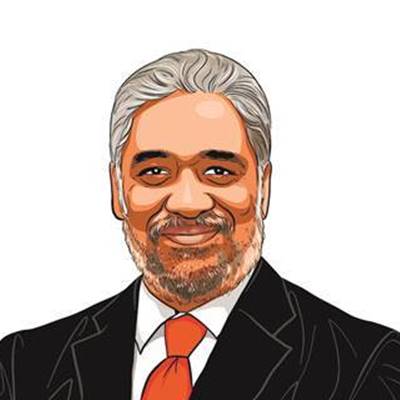Opinion Beyond curry and cricket: Australian PM Anthony Albanese’s visit to India signals strengthened bilateral relations
It is a sign of expansion of ties between New Delhi and Canberra. Both commerce and geopolitics are transforming bilateral relations
 Australian Prime Minister Anthony Albanese’s visit this week to India will consolidate and build on the expansive gains of the past few years in a range of areas.
Australian Prime Minister Anthony Albanese’s visit this week to India will consolidate and build on the expansive gains of the past few years in a range of areas. None of Delhi’s bilateral relations has transformed as rapidly in the past few years as that with Canberra. The same can be said of India’s place in Australia’s international relations. Few international observers would have bet a decade ago that the relationship between India and Australia, which ranged from prickly to indifferent in the second half of the 20th century, would become a valued strategic partnership for both in the 21st.
Australian Prime Minister Anthony Albanese’s visit this week to India will consolidate and build on the expansive gains of the past few years in a range of areas. Prime Minister Narendra Modi’s visit to Australia in 2014 was the first Indian prime ministerial visit in nearly three decades. Rajiv Gandhi had gone to Australia in 1986. The long gap underlined how profoundly India underestimated the importance of Australia for its economic and security interests.
To be sure, there were occasional efforts in the past to take the bilateral engagement beyond cricket and curry. Tentative signs of an emerging alignment of interests could be seen as far back as PM Julia Gillard’s visit to India in 2012. But success was elusive until recently.
The greatest source of change since then has been the willingness of Delhi and Canberra to take a strategic look at each other. This change of perspective has been matched by a new political will in both capitals.
Although the two sides shared democratic traditions, the English language, extended neighbourhood, and massive economic synergies, it was hard to bring them close together. Mutual political neglect, ignorance of commercial possibilities, and Cold War geopolitics limited the possibilities for bilateral relations during the 20th century. Recent years have certainly seen the end of political neglect. Sustained high-level exchanges have provided much-needed political momentum to the India-Australia partnership. Australia has long pushed for expanding its engagement with India. After much hesitation, Delhi is now reciprocating. In 2022, 10 union ministers from India travelled to Australia.
 Australian Prime Minister Anthony Albanese and External Affairs Minister S Jaishankar met in Melbourne on February 18, 2023. (Twitter/@DrSJaishankar)
Australian Prime Minister Anthony Albanese and External Affairs Minister S Jaishankar met in Melbourne on February 18, 2023. (Twitter/@DrSJaishankar)
Today, both commerce and geopolitics have become favourable factors in transforming bilateral ties. The complementarity between a rapidly growing Indian economy and the energy and mineral-rich Australia was always there to see. But it is only in the past couple of years that this complementarity has been turned into a concrete Economic Cooperation and Trade Agreement (ECTA). As Delhi turns to clean energy in a big way and ramps up its production of electronic goods, Australia’s role as a major supplier of critical minerals has come into view. The ECTA will strengthen India’s supply chains for the critical minerals essential to produce mobile phones, flat screen monitors, wind turbines, solar panels and electric cars in India.
The mineral sector, according to reports, will be represented strongly in the delegation accompanying Albanese. Beyond the boost to the energy and mineral partnership, Albanese would be interested in elevating the bilateral ECTA into a comprehensive economic cooperation agreement. Australia also has a strong fit with the Indian effort to modernise its higher education sector under the New Education Policy. Australia is now set to open two universities in Gujarat’s GIFT city. Education is a major Australian service export to India. Nearly 60,000 Indians are studying in Australia at the end of 2022.
The new dynamism in commercial relations has been facilitated by the transformation of the regional geopolitical environment in the past few years. The rapid rise and assertiveness of China provided a powerful new context for the transformation of Asia’s international relations, including bilateral ties between Delhi and Canberra. Most of China’s neighbours including India and Australia as well as the US had hoped that Beijing’s rise would be peaceful. Both Delhi and Canberra invested heavily in building what they thought were unique bilateral relationships with China. Over the past decade, though, India and Australia had to scramble to cope with muscular Chinese expansionism and economic policies. As they recalibrated their policies towards China, Delhi and Canberra inevitably turned towards each other.
Japan and the US were integral to this restructuring of the geopolitics of the shared neighbourhood of India and Australia. It was Tokyo that conceived a new Indo-Pacific regional framework and the Quad as an important instrument to keep it “free and open”. Overcoming hesitations, Australia, India, and the US rallied to embrace both ideas. The slow but certain improvement of relations between Delhi and Washington in the 21st century had a positive effect on India’s engagement with Australia, a leading Indo-Pacific ally of the US.
This new set of shared interests saw the rapid growth of defence and security ties at the bilateral level between India and Australia as well as strategic cooperation at the Quad level. An important task, however, demands the attention of Modi and Albanese. It is the opportunity for deeper regional coordination in at least three areas.
One, Delhi and Canberra must recognise the continuing anxiety in the region about the potential problems the Quad could trigger, especially with China. They need to be persistent in their efforts to reassure regional states, especially in South East Asia, that the Quad does not seek to contain China but rather to provide public goods in the Indo-Pacific. Modi’s emphasis on a “multipolar Indo-Pacific” and Albanese’s focus on “strategic equilibrium” provide the basis for a productive Indian and Australian regional engagement. The goal is to show ASEAN the Quad is complementary to the efforts to keep peace.
Second, given the vast size of the Indo-Pacific theatre, Delhi and Canberra also need to enhance their political coordination and strategic collaboration in the various subregions — including the southern ocean, Arabian Sea, Bay of Bengal, eastern Indian Ocean, and the South Pacific.
Third, Delhi and Canberra need to pay special attention to bilateral cooperation in the development and use of their island territories in the Indo-Pacific that occupy critical locations in the eastern Indian Ocean — this includes maritime domain awareness. They also need to develop collaborative strategies to support small island states in the Indo-Pacific that face so many economic, strategic, and environmental vulnerabilities.
Finally, the rapid growth in the strategic salience of the India-Australia relationship underlines the importance of continuous re-evaluation of relationships and the questioning of the political assumptions about other countries that acquire a life of their own and prevent productive diplomacy.
The writers are senior fellows, Asia Society Policy Institute. Maude is based in Canberra. Raja Mohan, based in Delhi, is a contributing editor on international affairs for The Indian Express







